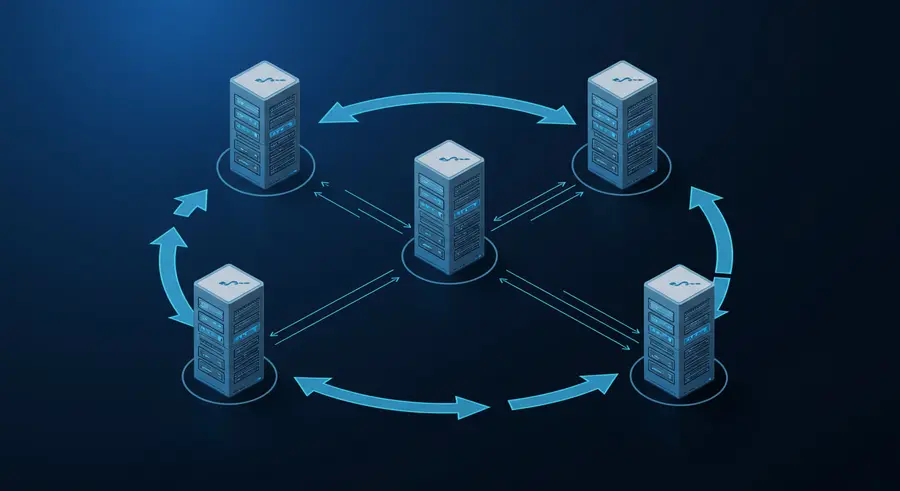Appearance

Welcome, tech innovators and DevOps enthusiasts! 👋 Today, we're diving deep into a fundamental concept that underpins reliable and scalable infrastructure management: Idempotency in Infrastructure as Code (IaC). If you've ever found yourself wondering how to ensure your infrastructure deployments are consistently the same, regardless of how many times you run your code, then you're in the right place!
What is Idempotency?
In the simplest terms, idempotency is the property of an operation that, when executed multiple times, produces the same result as if it were executed only once. Think of it like a light switch: flipping it "on" once turns the light on. Flipping it "on" ten more times won't make the light more on; it will remain in the "on" state.
In the context of Infrastructure as Code, idempotency means that applying your IaC configuration repeatedly to a system will always bring that system to the desired state, without causing unintended side effects or errors on resources that already exist. This is absolutely critical for automation, as it allows you to safely re-run deployments without fear of breaking existing infrastructure or creating duplicates.
Why is Idempotency Crucial for IaC?
The shift from manual infrastructure provisioning to IaC brings immense benefits: speed, consistency, and version control. However, without idempotency, these benefits can quickly turn into liabilities. Imagine a scenario where re-running your deployment script accidentally creates duplicate servers, reconfigures existing databases incorrectly, or applies changes to resources that shouldn't be touched. Chaos!
Idempotency provides:
- Predictability: You know exactly what state your infrastructure will be in after applying your code, every single time.
- Consistency: Eliminates configuration drift, ensuring all environments (development, staging, production) are identical.
- Reliability: Reduces the risk of errors and failures during deployments.
- Safety for Re-runs: Enables safe re-execution of scripts, which is vital for continuous integration/continuous deployment (CI/CD) pipelines, disaster recovery, and simple debugging.
- Simplified Rollbacks: If a change causes an issue, idempotent code makes it easier to revert to a previous, known-good state.
How is Idempotency Achieved in IaC Tools?
Most modern IaC tools are designed with idempotency at their core. They achieve this by:
- Desired State Configuration: Instead of instructing "how" to achieve a state (imperative), IaC tools focus on "what" the desired state should be (declarative). The tool then figures out the necessary steps to reach that state.
- State Management: Many tools maintain a state file that tracks the current state of your deployed infrastructure. Before making changes, they compare the desired state (defined in your code) with the actual state (of your infrastructure) and the recorded state (in the state file).
- Conditional Operations: Tools perform operations only if there's a difference between the current state and the desired state. For example, if a virtual machine already exists with the correct configuration, the tool will do nothing. If it's missing or misconfigured, it will create or modify it.
Let's look at some popular IaC tools:
Terraform 🌍
Terraform, a widely used open-source IaC tool by HashiCorp, is inherently idempotent. It uses a declarative approach to define infrastructure resources.
Example (Terraform HCL):
terraform
resource "aws_instance" "web_server" {
ami = "ami-0abcdef1234567890"
instance_type = "t2.micro"
tags = {
Name = "MyWebServer"
}
}If you run terraform apply multiple times with this code, Terraform will:
- First Run: Create an EC2 instance named "MyWebServer".
- Subsequent Runs: Check if an instance named "MyWebServer" with the specified AMI and instance type already exists. If it does, and its configuration matches, Terraform will report "No changes. Your infrastructure matches the configuration." It won't try to create another instance.
Ansible ⚙️
Ansible, an automation engine, is also designed with idempotency in mind, particularly for configuration management. Ansible modules often have built-in checks to determine if a task needs to be performed.
Example (Ansible Playbook to ensure a service is running):
yaml
- name: Ensure Apache is running and enabled
ansible.builtin.service:
name: apache2
state: started
enabled: trueWhen this task runs:
- If Apache is already running and enabled, Ansible will report "OK" (no change needed).
- If Apache is stopped or not enabled, Ansible will start/enable it and report "CHANGED". The outcome is always the same: Apache is running and enabled, regardless of its initial state.
The Link to "Getting Started with Terraform"
The infrastructure-as-code catalogue already features "Getting Started with Terraform". Understanding idempotency is the natural next step after grasping the basics of Terraform. It reinforces why IaC tools behave the way they do and how to leverage their power for robust, error-free deployments. It’s the predictable magic behind managing complex systems efficiently.
Best Practices for Idempotent IaC
- Be Declarative: Focus on defining the desired end state, not the steps to get there.
- Use Idempotent Modules/Resources: Always prefer modules and resources provided by your IaC tool that are designed to be idempotent.
- Test Thoroughly: Even with idempotent tools, test your IaC code in various scenarios (first run, re-run, after manual changes) to ensure it behaves as expected.
- Version Control Everything: Store your IaC code in Git. This allows you to track changes, revert if necessary, and collaborate effectively.
- Small, Incremental Changes: Apply changes in small batches to easily isolate issues if they arise.
Conclusion
Idempotency is not just a technical concept; it's a foundational principle that elevates Infrastructure as Code from a mere scripting exercise to a powerful paradigm for managing modern, dynamic infrastructure. By ensuring that our infrastructure deployments are predictable and consistent, we build more reliable systems, accelerate our delivery pipelines, and ultimately, free up valuable time for innovation. Embrace idempotency, and unlock the true potential of your DevOps journey! 🚀